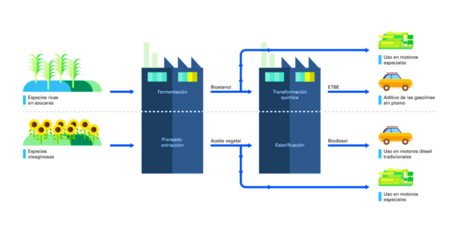
As Peruvian engineers, most of the time we take as a reference indicators based on the Global North (U.S. and Europe) in addition to China, however we feel lack of a globalization the concept coined by the Scottish sociologist, Roland Robertson, whose idea conveys that you should think globally and act locally with strategy. In this context, this reflection will deal with a review article entitled “Tackling sustainability challenges in Latin America and Caribbean from the Chemical Engineering Perspective: A literature review in the last 25 years”, which has been published in the journal “Chemical Engineering Research and Design” by Mexican authors Juan Gabriel Segovia-Hernández, Salvador Hernández, Enrique Cossío-Vargas and Eduardo Sánchez-Ramírez, in 2022. The main objective is to develop the sustainability challenges facing South America and the Caribbean and industrial and academic initiatives over the past 25 years.
The article highlights that although many countries in our region are developing, the chemical industry in the region is highly competitive globally, thanks to the availability of natural resources and raw materials, including water, land and biodiversity. The authors cite the rapid agricultural revolution and the evolution towards global leadership in the exploitation of biofuel markets and new agricultural technologies as indicators of the region’s potential. In addition, the significant production of commodity chemicals such as metals, petroleum and its derivatives, cosmetics, perfumes and pharmaceuticals are also highlighted. This same production that generates wealth and jobs is also responsible for a large amount of industrial waste, given this concern industry has shown interest in increasing energy efficiency and reducing waste, on the other hand, relevant (LAC) scientific research is recorded in areas covering energy, environmental, economic and industrial safety aspects. There are also discussion initiatives on issues such as sustainable energy transition and the need for concrete actions by the academy to implement case studies in the classroom and encourage conversations and solutions-oriented approaches.

The aforementioned article has been divided into 10 sections that address aspects from effluent and emissions treatment systems to intensification and energy recovery systems through the need for supply chain sustainability and recovery of residues and plant biomass. With this and the breadth of the topics covered, this blog will present the first topics from energy recovery systems to air, water and soil remediation techniques. It remains for the second part (upcoming editions, still in this 2024) the discussion of topics such as biomass valorization, intensification of processes and life cycle analysis methods as main challenges.
Regarding energy and heat recovery systems for sustainable development in LAC, several studies and publications are presented that discuss the optimization and design of heat exchanger networks, minimizing water and energy consumption, and the integration of solar energy and other renewable energy sources into industrial processes such as green hydrogen. In this section, linear programming models and the integration of regenerative organic Rankine cycles in industrial processes are unmissable.
The section dedicated to water treatment in LAC highlights recent advances in the treatment of water contaminated with chemical compounds of various origin, hydrocarbons, antibiotics, heavy metals, dyes, etc. that come from the direct discharge of waste water from the textile, plastic, leather, cosmetic, paper, printing and food processing industries to the environment. These industries require the use of appropriate treatment technologies to reduce the concentration of these pollutants in industrial effluents and ensure environmental standards. Among the strategies mentioned are the use of cationic polymer (Amberlite IRA 402) in batch tests to adsorb dyes and the study of experimental factors such as the amount of resin, the concentration of organic matter, the optimal interaction time and pH. Anodic Fenton (AFT) treatments are also mentioned to treat small volumes and low concentrations of organic pollutants at short treatment times, using bench-sized reactors with different configurations.
There are more, Segovia and collaborators also deals with soil and air remediation initiatives. For the soil, the efforts made for remediation by pollution with hydrocarbons, pesticides and heavy metals stand out. The use of techniques such as surfactant-assisted soil washing is mentioned, in addition, the effectiveness of winter plants in the phytoremediation of soils contaminated with herbicides and the use of zero-valent iron and iron-complexes is discussedcopper in soil remediation with pesticides. In addition, it highlights the need to develop specific remediation strategies and the importance of multidisciplinary research to understand the pathways of release of pollutants to the environment.
For air, air pollution and its impact on global warming are addressed, identifying greenhouse gases such as fluorinated, nitrous oxide, methane and carbon dioxide. Management and treatment strategies are presented to transform these pollutants into less dangerous forms such as the use of TiO2 (titanium dioxide) and nanophotocatalysts in applications such as water and air purification, disinfection and soil sterilization. In association with the application, traditional and new industrial routes for the production of nanophotocatalysts are described.
In addition, it mentions works about the activity and stability of bimetallic gold-iridium catalysts for the oxidation of volatile organic compounds at low temperatures, highlighting their synergy. As you can see, the main emission remediation approach in LAC is focused on the development of new materials.
In short, Latin America has the potential to develop industrial technologies that allow a sustainable production of goods and services, hopefully, the impact of anthropogenic sources on the exploitation of resources, the environment is much more conscious as we come to the earth’s bearing capacity which opens challenges and opportunities for future generations of chemical engineers.

This blog was written with the assistance of AI tools. Specifically, the Chatpdf (https://www.popai.pro) summarized the reference sections of the article.
Reference
Juan Gabriel Segovia-Hernández, Salvador Hernández, Enrique Cossío-Vargas, Eduardo Sánchez-Ramírez. Tackling sustainability challenges in Latin America and Caribbean from the chemical engineering perspective: A literature review in the last 25 years, Chemical Engineering Research and Design, 188, Pages 483-527, 2022. https://doi.org/10.1016/j.cherd.2022.10.012.




